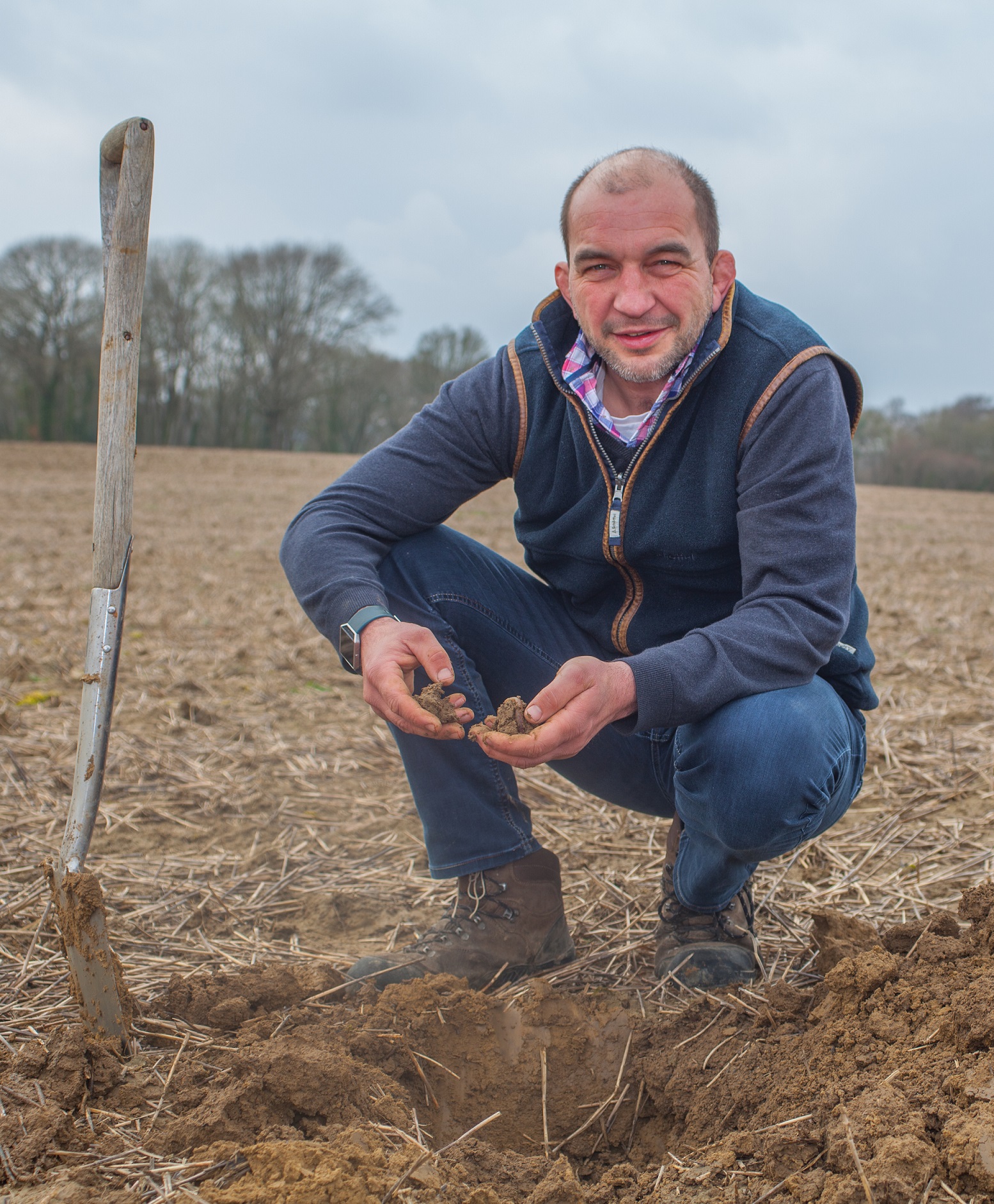Discs versus tines at Petworth Monitor Farm
Monday, 29 October 2018
AHDB’s Petworth Monitor Farm group reignited two popular debates at their recent meeting (18 October 2018): discs versus tines and ‘to till or not to till’.
The Monitor Farm group is hosted by Mark Chandler at Moor Farm in West Sussex.
Mark and the other farmers in the group wanted to see how different levels of cultivation and types of drilling affected his first wheat crop, following beans.
In a normal year, Mark would cultivate behind the combine with a Simba SL600 cultivator running LD legs and points. He would usually use an LD subsoiler and carrier disks on compacted areas or tramlines, before drilling with a Horsch Sprinter Drill or Amazone Cayena low-disturbance tined coulter drill.
Paul Hill, AHDB Knowledge Exchange Manager, said: “Does Mark actually need all the machinery he has and can he get away with doing less tillage, so saving time and money? We looked at these questions and more during the Monitor Farm meeting.”
The experiment at Moor Farm includes:
- Six plots, 2ha each, two tramlines wide
- Three plots undisturbed
- Three plots cultivated
- Simba SL cultivator straight after combine
- Vaderstadt Carrier Disk
- Weaving LD
- Half of each plot was drilled with Skyfall wheat to a depth of 2.5cm with a Horsch drill (tines) and half with a Sky Easy Drill (discs).
At this stage in the season, Mark and the group assessed the different plots by digging pits with soils guru Philip Wright. These pits were compared with un-moved ground in a neighbouring field which had generally very good soil structure.
Paul said: “During the meeting, perhaps the most crucial topic we covered was how to dig a soil pit correctly. It sounds simple, but if not done right it could make it extremely difficult to analyse your soil structure properly.”
Mark found that looks can be deceiving, early on in the season.
He said: “The cultivated plot, although it looked good, was over-cultivated because actually the baseline soil structure was ok. But by cultivating, we’d made the top four inches too fine which held the moisture up. It sat wetter and didn’t walk as well.
“But the unmoved ground which we’d disc drilled was cosmetically poor but actually the soil structure under the surface was good, with good water penetration. Although it’s very early to judge the emergence, the rooting depth was looking good.”
Throughout the growing year, Mark will be measuring seed germination, plant counts and, finally, yield.
Paul Hill said: “This kind of measuring can be done with the AHDB Wheat Growth Guide. The Guide gives farmers a great baseline to compare different approaches against. It’s also a good idea to repeat the same on-farm tests over a number of years.”
Mark said: “The key so far, we’ve found, is to be versatile and make each decision according to the conditions in the field. Our soils are quite variable, so our management approach needs to be variable too, although this does take more time. We need to fine-tune our decisions and pay close attention to the soil.”
What’s next? Over-wintered stubble before barley. Ordinarily Mark would cultivate the field and spring crop for black-grass control. The soil doesn’t need working, so he’s looking at keeping the surface cultivation as shallow as possible, but enough to get a black-grass germination.
Find out more about the Petworth Monitor Farm at cereals.ahdb.org.uk/petworth or contact Paul Hill on 07964 243699 or paul.hill@ahdb.org.uk


